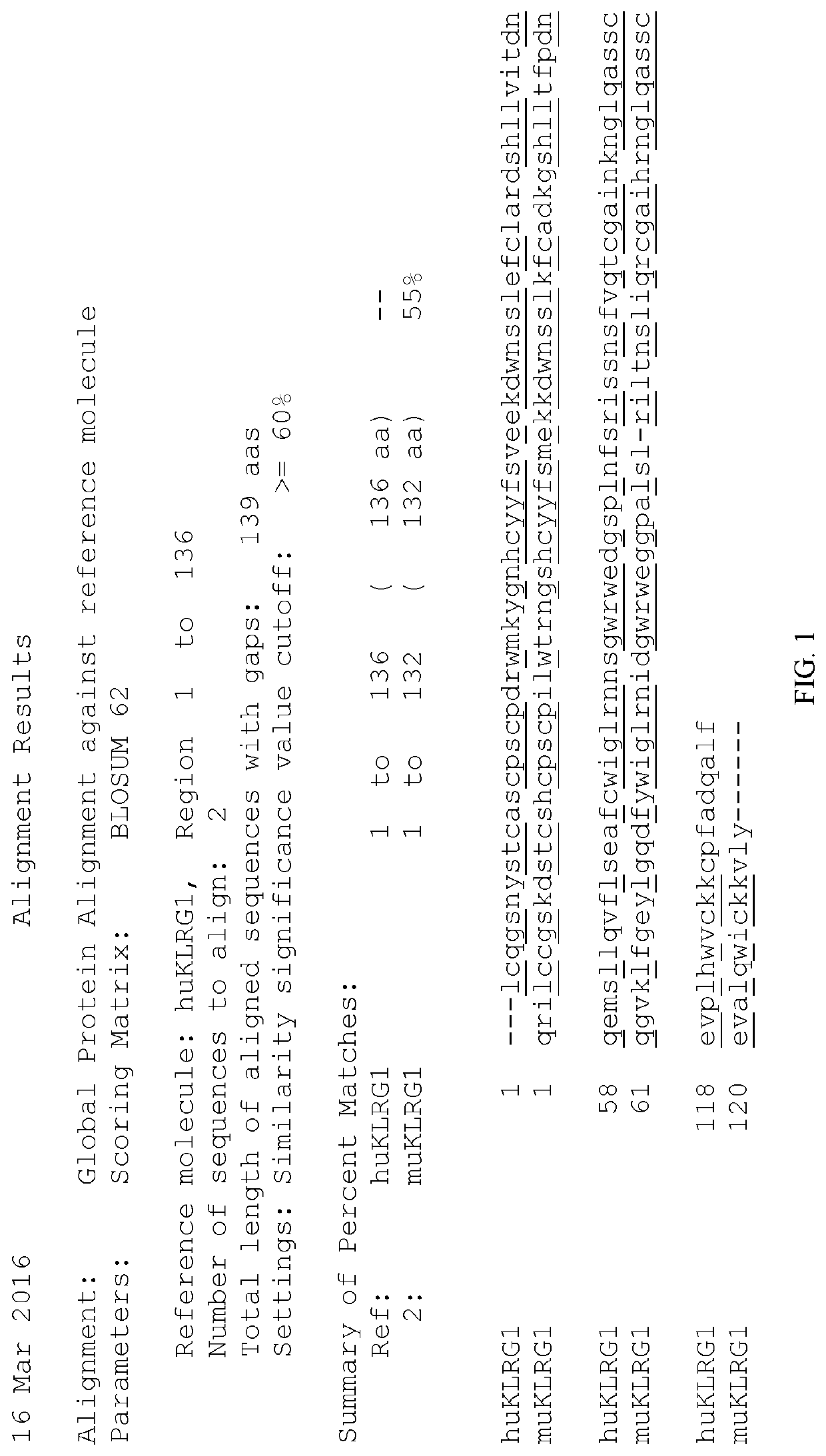KLRG1 Binding Compositions and Methods of Use Thereof
a technology of klrg1 and composition, which is applied in the field of klrg1 binding composition, can solve the problems of not being approved for all types of cancer, no one drug that can be used to successfully treat all cancers, etc., and achieve the effect of reducing t cell and/or nk cell suppression, and increasing cytokine production
- Summary
- Abstract
- Description
- Claims
- Application Information
AI Technical Summary
Benefits of technology
Problems solved by technology
Method used
Image
Examples
Embodiment Construction
I. Definitions
[0123]As used herein, a molecule is said to be able to “immunospecifically bind” a second molecule if such binding exhibits the specificity and affinity of an antibody to its cognate antigen. Antibodies are said to be capable of immunospecifically binding to a target region or conformation (“epitope”) of an antigen if such binding involves the antigen recognition site of the immunoglobulin molecule. An antibody that immunospecifically binds to a particular antigen may bind to other antigens with lower affinity if the other antigen has some sequence or conformational similarity that is recognized by the antigen recognition site as determined by, e.g., immunoassays, BIACORE® assays, or other assays known in the art, but would not bind to a totally unrelated antigen. Preferably, however, antibodies (and their antigen binding fragments) will not cross-react with other antigens. Antibodies may also bind to other molecules in a way that is not immunospecific, such as to FcR ...
PUM
| Property | Measurement | Unit |
|---|---|---|
| nucleic acid | aaaaa | aaaaa |
| size | aaaaa | aaaaa |
| concentration | aaaaa | aaaaa |
Abstract
Description
Claims
Application Information
 Login to View More
Login to View More - R&D
- Intellectual Property
- Life Sciences
- Materials
- Tech Scout
- Unparalleled Data Quality
- Higher Quality Content
- 60% Fewer Hallucinations
Browse by: Latest US Patents, China's latest patents, Technical Efficacy Thesaurus, Application Domain, Technology Topic, Popular Technical Reports.
© 2025 PatSnap. All rights reserved.Legal|Privacy policy|Modern Slavery Act Transparency Statement|Sitemap|About US| Contact US: help@patsnap.com

